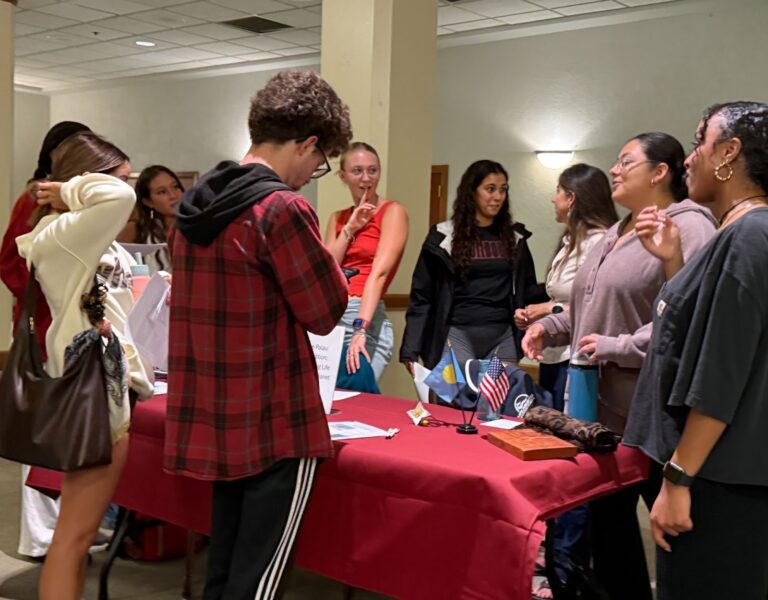
This semester, the University of Redlands has rolled out a new keycard system across its dormitories, replacing the traditional physical keys with keycards that offer a range of security and convenience benefits. The upgrade is part of the university’s ongoing effort to enhance campus safety and streamline access for students, staff, and facilities. For more on the initial keycard transition, read our previous coverage here.
The new system allows students to access their respective dorm halls by tapping their keycards on a scanner. The recent keycard upgrade has significantly enhanced campus security by ensuring that only verified individuals—students, staff, and authorized personnel—can access buildings. This upgrade not only reduces the risk of unauthorized entry but also bolsters overall safety. According to Marissa Spires, a Residential Assistant (RA), the update has effectively limited building access.
“Student keycards, like keys, only unlock each student’s respective dorm hall,” Spires noted, emphasizing that this restriction prevents unauthorized individuals from entering residential buildings.
Additionally, keycards have integrated student ID information and images, which simplifies the process of returning misplaced or lost cards. Public Safety can now more easily identify and contact students to reunite them with their cards, minimizing fines that were previously associated with lost keys.
While the overall response to the keycard system has been positive, a few concerns have arisen. Spires said, “The only concerns I’ve heard so far were where certain keycard scanners were not working during the beginning of the year.”
Spires also mentioned that these issues were quickly addressed by the university’s technical team, though occasional malfunctions remain a potential worry.
Others are worried that punching holes in keycards, a common practice for attaching them to keyrings, might damage the embedded chips.
“We’re still figuring out if hole-punching keycards could impact the functionality,” said Spires.
There’s also the question of how the system might respond in the event of a power outage or campus-wide network error. Spires expressed personal concern about this potential challenge, although the university has not yet encountered such an issue.
Looking ahead, Spires anticipates a few challenges with the new system, particularly if students misplace their keycards or if they fall into the hands of non-residents.
There is also some concern over the reliability of the scanners. “I’d be worried if the keycard scanners continually malfunction,” Spires said, though she remains hopeful that the university will stay on top of any technical issues.
Despite some concerns, the keycard system has introduced several advantages for residents.
“I like the convenience of the new keycards,” said Conner Claborn ‘26, who finds the quick tap entry faster than the old key mechanisms.
Spires echoed this sentiment, noting that keycards are more efficient for entering buildings.
“With one quick tap, students can access their dorm, as opposed to the time-consuming process of fumbling with keys,” Spires said.
In addition to building access, the new keycards also provide quick entry and transaction capabilities at campus facilities like The Commons, The Launch, and The Den, making student life even more streamlined.
Resident Assistants also appreciate the new benefits, as it’s easier to identify residents.
“RAs can now easily ask to see a resident’s ID card in person, which maximizes security and accuracy in documenting incidents or reports,” said Spires.
The transition to keycards has been smooth for the Residence Life & Housing (RLH) department. RAs and RLH staff were among the first to receive keycards for exterior door access. While early arrivals and athletes were initially given traditional keys, all students exchanged their keys for keycards during check-in at the start of the semester.
As the University of Redlands continues to refine the keycard system, the general sentiment on campus remains optimistic. The enhanced security features, coupled with the convenience and efficiency of keycard access, signal a positive step forward in campus safety and modernization.
For now, the University of Redlands is closely monitoring feedback and addressing technical issues to ensure that the new system remains a secure and reliable tool for all residents.
Photo by Anika Tabassum
Anika Tabassum is from Bangladesh. She is a senior pursuing a double major in Computer Science and Business Administration. Her passions include seeking adventure, exploring new places as well as enjoying sports like Badminton and Tennis while maintaining an active lifestyle at the gym.





